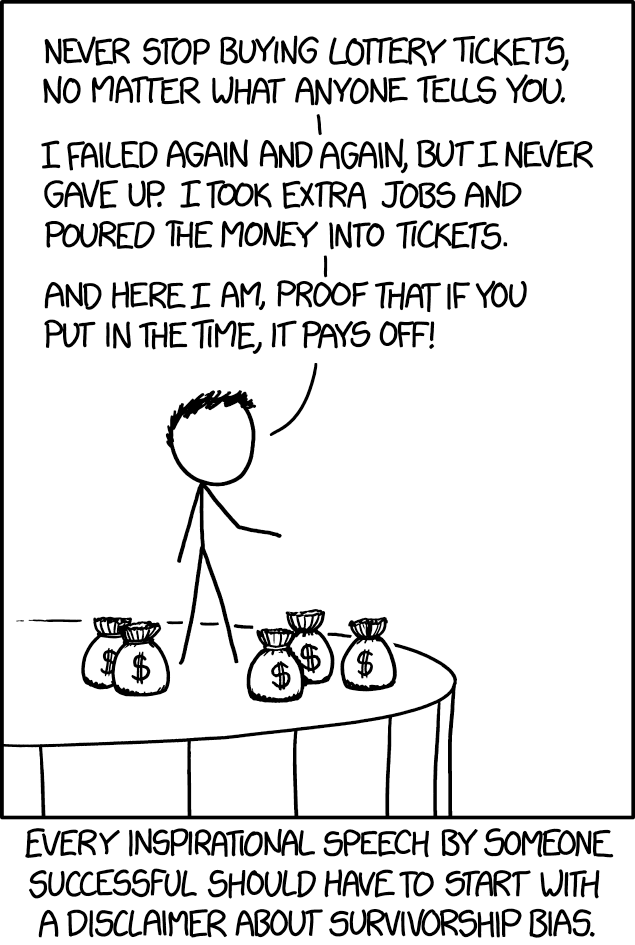
A weird side-effect of my constant anxiety is I naturally think about worse-case scenarios. That sounds bad, and it can be, but it turns out there is an evolutionary benefit to this constant stress.
You see, many people tend to focus only on what they want to achieve and how to get there. This thinking approach can work for day-to-day goals, but it falls short when aiming for something out of the ordinary.
This where the concept of inversion can help you think differently.
We will see in a moment how this thinking approach has successfully been used in history, and how you can apply it today in your personal and professional life.
What is Inversion?
Inversion is a mental model that involves shifting your perspective from "what do I want?" to "what could go wrong?" or "what's the opposite of my goal?"
This method allows you to see hidden dangers, avoid mistakes, and make better decisions by considering the problem from a different angle.
Instead of starting with your goal, you can ask:
- What would lead me to failure?
- What should I avoid to succeed?
- What happens if I invert my thinking?
Thinking backward or about the opposite helps reveal blind spots that are often missed in highly-confident people when only focusing forward. This technique can streamline your project, reduce errors, and increase your chances of success.
Abraham Wald's WWII Fighter Plane Study
I am sure you have seen this image:

It's used to demonstrate survivorship bias, but it is also an example of inverted thinking.
The airforce wanted to reinforce parts of their aircraft that sustained the most damage, based on bullet hole patterns observed on returning planes. The assumption was to add armor to areas hit most often, like wings and fuselage.
Wald observed that the planes that returned were hit in certain places, but what about those that didn't come back?
The Inverted Insight
Instead of reinforcing the areas with the most damage, Wald suggested strengthening the parts that showed little or no damage, such as the engines and cockpit, because hits in those areas were often fatal and prevented planes from returning.
This simple shift in perspective saved countless lives by correctly identifying where reinforcement was actually needed.
Types of Inversion
Inversion isn't just about thinking backwards. It can be applied in different ways:
1. Working Backwards from the End
- Focus on the desired outcome but analyze the steps that would prevent you from reaching it.
- Example: Instead of asking, "How do I succeed?", ask "What would cause me to fail?" and avoid those pitfalls.
2. Focusing on the Opposite of Your Goal
- Think about what would be the opposite or worst-case scenario of your goal.
- Example: Instead of asking "How can I become successful?", ask "What would make me fail and how can I prevent it?".
How to Use Inversion Today
Applying inversion is surprisingly practical and can improve many areas of life:
- Identify common mistakes or traps that lead others astray.
- Example: Charlie Munger, Warren Buffett's partner, emphasized avoiding stupid mistakes over trying to be brilliant.
Failure Premortem
- Imagine your project or goal has failed after six months.
- Ask: What went wrong? What mistakes might I have made?
- This helps you spot risks early and correct course.
Improving Relationships
Rethink the golden rule.
- Instead of asking, "How do I want to be treated?", consider "What would hurt me in a relationship?" and avoid causing those issues.
- Common negatives include lying, disrespect, or criticism.
Enhancing Health
Focus on what harms your health rather than only what improves it.
- Questions to ask:
- What habits damage my health?
- How can I reduce these behaviors?
- Examples: smoking, excessive alcohol, poor sleep, stressors like doom-scrolling or overcommitting.
Protecting Mental Well-being
Think about what drains your mental energy, like negative relationships, constant interruptions, or repetitive, pointless tasks.
- Once identified, you can start removing or reducing these harms.
Practical Steps to Apply Inversion
- Define your goal or problem clearly.
- Ask the opposite questions:
-- What causes failure?
-- What should I avoid?
-- How could I make things worse if I’m not careful? - Brainstorm potential pitfalls or harms.
- Develop strategies to avoid these risks or to flip obstacles into opportunities.
- Regularly review your assumptions from an inversion perspective to stay alert to hidden dangers.
The Benefits of Inversion Thinking
By shifting your perspective and thinking backwards or in opposites, you gain a clearer understanding of what it takes to succeed and what it takes to avoid failure. This simple mental model can lead to better decisions, less wasted effort, and more consistent progress.
- It exposes blind spots others miss.
- Helps avoid mistakes rather than just chasing success.
- Clarifies what not to do, which is often easier than defining what to do.
- Can be applied in business, relationships, health, and personal growth.
Bottom Line
You don't need to become an anxious wreck like me. By practicing inversion conciously, you can sharpen your judgment, reduce costly or embarassing mistakes, and find new routes to achieve your goals.
PS.
I prefer this as an example of survivorship bias ;)

Our laser focus may blind us to the obstacles. I'd heard the plane story before, but for some reason I thought it was Alan Turing.
I expect a lot of mega rich people got lucky as you don't hear about all those who worked just as hard and didn't make it. If your 'luck' is consistent then you may be special, and cautious. Similar with those who do dangerous stunts for a living.